
Monemvasia: The Enchanted Medieval Fortress Town
Discover the magic of Monemvasia, a medieval fortress town on the coast of Greece, where history, architecture, and natural beauty converge.
Monemvasia, often referred to as the 'Gibraltar of the East,' is a hidden gem on the southeastern coast of the Peloponnese in Greece. This medieval fortress town is perched on a large rock, connected to the mainland by a narrow causeway. As soon as you step through the ancient stone gate, you are transported back in time, surrounded by cobblestone streets, Byzantine churches, and charming stone houses. The town is a labyrinth of narrow alleys and secret passages, perfect for exploring on foot. Every corner reveals a slice of history, from the well-preserved Agia Sofia church perched high on the cliff to the ruins of the old fortress that offers breathtaking views of the Aegean Sea. The lower town is bustling with lively tavernas, quaint shops, and cozy cafes, making it a delightful place to relax and soak in the atmosphere. Monemvasia's unique blend of history, architecture, and natural beauty makes it a must-visit destination. Whether you are a history buff, a romantic, or simply in search of a serene escape, Monemvasia promises an unforgettable experience filled with wonder and charm.
Local tips in Monemvasia
- Visit early in the morning or late in the afternoon to avoid the heat and crowds.
- Wear comfortable walking shoes to navigate the cobblestone streets and steep paths.
- Don't miss the panoramic views from the old fortress at the top of the rock.
- Sample local delicacies at the traditional tavernas in the lower town.
- Bring a camera to capture the stunning architecture and scenic views.
Monemvasia: The Enchanted Medieval Fortress Town
Monemvasia, often referred to as the 'Gibraltar of the East,' is a hidden gem on the southeastern coast of the Peloponnese in Greece. This medieval fortress town is perched on a large rock, connected to the mainland by a narrow causeway. As soon as you step through the ancient stone gate, you are transported back in time, surrounded by cobblestone streets, Byzantine churches, and charming stone houses. The town is a labyrinth of narrow alleys and secret passages, perfect for exploring on foot. Every corner reveals a slice of history, from the well-preserved Agia Sofia church perched high on the cliff to the ruins of the old fortress that offers breathtaking views of the Aegean Sea. The lower town is bustling with lively tavernas, quaint shops, and cozy cafes, making it a delightful place to relax and soak in the atmosphere. Monemvasia's unique blend of history, architecture, and natural beauty makes it a must-visit destination. Whether you are a history buff, a romantic, or simply in search of a serene escape, Monemvasia promises an unforgettable experience filled with wonder and charm.
When is the best time to go to Monemvasia?
Iconic landmarks you can’t miss
Oinomelo
Experience the authentic flavors of Greece at Oinomelo in Monemvasia, where traditional dishes meet warm hospitality in a charming setting.

Emvasis Cafe - Cocktail Bar/Εμβασις
Discover the exquisite cocktails and delightful bistro cuisine at Emvasis Cafe, set against the breathtaking backdrop of Monemvasia's Castle.

Monemvasia Bridge
Discover the breathtaking views and rich history at Monemvasia Bridge, a stunning connection between land and ancient heritage.

Acropolis of Monemvasia
Discover the captivating Acropolis of Monemvasia, a breathtaking historical landmark where ancient charm meets stunning Aegean views in Greece.
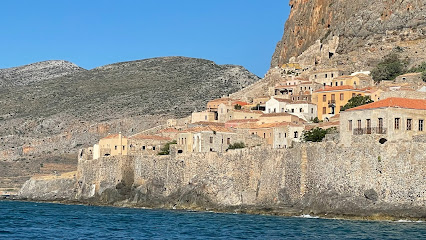
CHRISOLITHOS
Explore the vibrant selection of local crafts at Chrisolithos, a premier souvenir store in Monemvasia, Greece, offering unique keepsakes and cultural treasures.

Malvasia Traditional Hotel
Discover the rich history and stunning views at Malvasia Traditional Hotel, your perfect getaway in Monemvasia's ancient Kastro.

Hagia Sophia Holy Orthodox Church
Explore the Byzantine splendor of Hagia Sophia, a historic Greek Orthodox church in Monemvasia, rich in art and serene beauty.

Lighthouse of Monemvasia
Explore the breathtaking Lighthouse of Monemvasia, a historical gem offering stunning views and a glimpse into Greece's maritime heritage.

Paralia Monemvasias
Experience the serene beauty of Paralia Monemvasias, a stunning beach where golden sands meet crystal-clear waters, perfect for relaxation and adventure.

Kellia Guesthouse
Experience the charm of Kellia Guesthouse in Monemvasia, where comfort meets local hospitality in the heart of Greece.

Monemvassia Island
Explore Monemvassia Island: A breathtaking blend of medieval architecture, stunning landscapes, and rich cultural heritage awaits every visitor.

Ardamis Traditional Guesthouse
Experience the charm of Monemvasia at Ardamis Traditional Guesthouse, where history and hospitality meet stunning coastal views.

Elkomenos Christos
Explore the serene beauty and rich history of Elkomenos Christos, a stunning Greek Orthodox church in Monemvasia, Greece.

Cannon
Discover the historical allure of Cannon in Monemvasia, where ancient architecture meets breathtaking coastal views.

Moni Emvasis Luxury Suites
Discover the luxurious Moni Emvasis Suites, set amidst the historic charm of Monemvasia's castle, offering stunning views and unparalleled comfort.

Unmissable attractions to see
Elafonisos
Discover the serene beauty of Elafonisos Island, Greece, with its pristine beaches, azure waters, and authentic Greek culture for an unforgettable getaway.

CHRISOLITHOS
Discover unique Greek souvenirs and immerse yourself in the culture at Chrisolithos, a premier tourist attraction in Monemvasia.
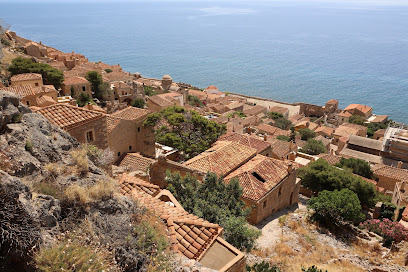
Holy Church of Hagia Sophia
Discover the breathtaking Holy Church of Hagia Sophia in Monemvasia, a stunning example of Byzantine architecture and a testament to Greek Orthodox heritage.
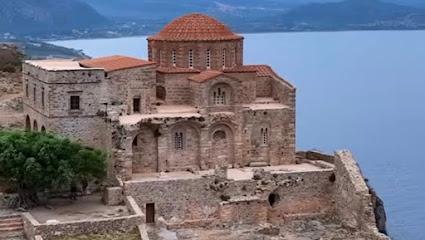
Elkomenos Christos
Explore the spiritual heritage of Greece at Elkomenos Christos, a stunning Greek Orthodox church in the historic town of Monemvasia.

Panagia Chrysafitissa Church
Explore the Panagia Chrysafitissa Church in Monemvasia, a tranquil gem showcasing Greek Orthodox architecture and breathtaking views.

Kastraki Beach
Discover the beauty of Kastraki Beach, a hidden gem near Monemvasia, Greece, offering breathtaking views, serene waters, and fantastic local cuisine.

Monemvasia Deli - Edodimopolio
Explore the culinary treasures of Greece at Monemvasia Deli, where local delicacies and artisanal products await to delight your taste buds.

Chryssafitissa Square
Discover the charm of Chryssafitissa Square in Monemvasia – a historical gem filled with local culture, stunning architecture, and serene relaxation.

Προβλήτα ΠλάκαςΛιμένα Μονεμβασίας
Experience the charm of Monemvasia's marina, where stunning views, local cuisine, and rich history converge for an unforgettable Greek adventure.

Portello Beach
Discover the serene beauty of Portello Beach in Monemvasia, a perfect blend of sun, sand, and ancient history for all travelers.
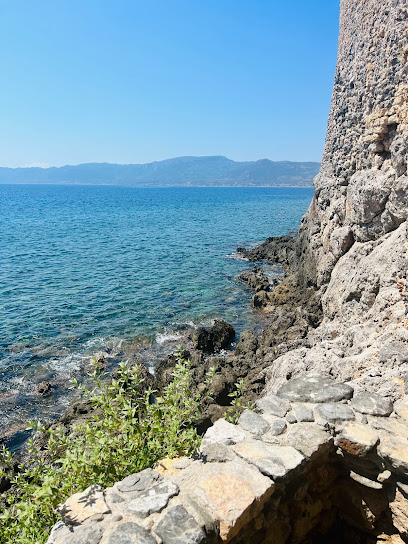
Pēgés
Discover the serene beauty and rich history of Pégès, a captivating tourist attraction in Monemvasia, Greece, perfect for nature lovers and history enthusiasts alike.

Αρχαίος Ασωπός
Discover the timeless beauty and historical significance of Αρχαίοι Ασώποι in Monemvasia, a captivating archaeological site rich in ancient heritage.

Μονή Γρηγόρη
Discover the enchanting medieval town of Monemvasia, a historical landmark in Greece offering stunning views, rich culture, and timeless beauty.

Monemvasia Central Square
Experience the charm of Monemvasia's Central Square, a historic hub surrounded by stunning medieval architecture and vibrant local culture.

Framed panoramic point
Experience the breathtaking views and historical charm at the Framed Panoramic Point in Monemvasia, Greece—a must-see for every traveler.

Essential places to dine
Matoula Restaurant
Experience authentic Greek flavors at Matoula Restaurant in Monemvasia - a culinary haven by the sea.

Oinomelo
Discover the authentic flavors of Greece at Oinomelo, where traditional cuisine meets warm hospitality in stunning Monemvasia.

Emvasis Cafe - Cocktail Bar/Εμβασις
Experience exquisite Greek cuisine and artisanal cocktails at Emvasis Cafe in Monemvasia's historic castle district.

Athivoli
Experience authentic Greek cuisine with a creative twist at Athivoli in Monemvasia—where tradition meets innovation.

Restaurant Skorpios
Discover authentic Greek flavors at Restaurant Skorpios in Gefira – where tradition meets exceptional dining experiences.

mateo`s
Experience fresh seafood and local brews at Mateo's in Gefira - where every meal is a taste of Greece.

Voltes
Experience exquisite Greek flavors at Voltes in Monemvasia – where every dish tells a story.

Kanoni
Discover Kanoni in Monemvasia: A delightful blend of Greek and Mediterranean flavors awaits you at this charming restaurant.
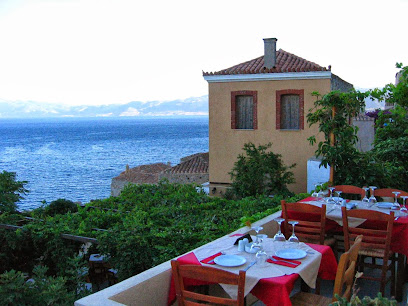
The Athas
Experience authentic Greek cuisine at The Athas in Agios Ioannis - where every dish tells a story of tradition and flavor.

Chrisovoulo Cafe Restaurant Bar
Discover authentic Greek cuisine at Chrisovoulo Cafe Restaurant Bar, nestled within historic Monemvasia Castle with stunning sea views.

Marianthi
Savor traditional Greek cuisine at Marianthi in Monemvasia, where every dish tells a story of heritage and flavor.

Το καστράκι
Savor authentic Greek flavors at Το καστράκι in Γέφυρα – where tradition meets taste in every delightful dish.

Peinakothḗkē
Experience the best crêpes and homemade ice creams at Peinakothḗkē in Monemvasia – where flavor meets tradition in every bite.

Taverna Asterias
Experience authentic Greek cuisine at Taverna Asterias in Gefira - where flavor meets stunning views.

Aktaion
Experience authentic Greek cuisine at Aktaion with stunning sea views and fresh local ingredients.

Markets, malls and hidden boutiques
CHRISOLITHOS
Explore Chrisolithos in Monemvasia for unique souvenirs that celebrate local craftsmanship and culture, perfect for your travel memories.

Peinakothḗkē
Experience the exquisite flavors of crêpes and ice creams at Peinakothḗkē in Monemvasia, Greece - a culinary gem in a historic setting.
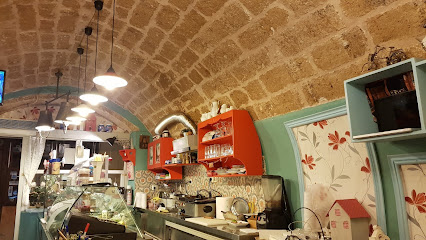
βῶλαξ (volax) espresso bar
Experience the perfect blend of rich coffee and stunning views at βῶλαξ Espresso Bar in historic Monemvasia, Greece.

Χαράμης Cakeshop
Discover the sweet side of Gefira at Χαράμης Cakeshop, where delightful pastries and cakes await every sweet tooth.

Galera gelato
Experience the finest artisanal ice cream at Galera Gelato in Monemvasia, where every scoop is a delightful taste of summer.

Το Κελάρι
Explore the flavors of Monemvasia at Το Κελάρι, your go-to grocery store for local delicacies and authentic culinary experiences.

Monemvasia Deli - Edodimopolio
Explore Monemvasia Deli - Edodimopolio for a taste of Greece with artisanal products and local delicacies, perfect for food lovers and travelers alike.

Pietra Boutique Monemvasia
Explore the charm of Pietra Boutique in Monemvasia, Greece, where style meets tradition in a beautifully curated clothing store.

Maroulakos
Explore the artistic haven of Maroulakos in Monemvasia, Greece, where vibrant colors and quality supplies inspire creativity for every artist.

Niove Greek Designers Boutique
Discover unique Greek fashion at Niove Designers Boutique in Monemvasia, where craftsmanship meets contemporary style.

Byzantinos Bar
Discover the best cocktails and local beers at Byzantinos Bar in Monemvasia, where ambiance meets unforgettable flavors.
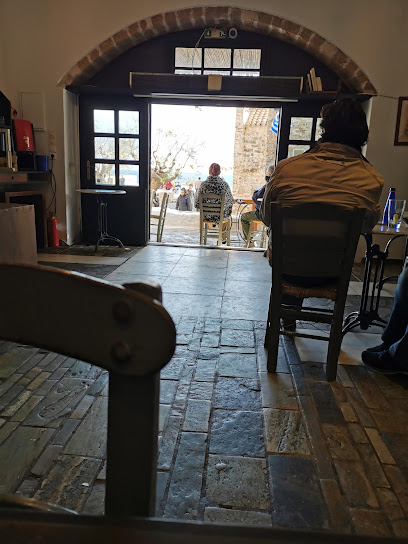
Karavaki
Discover the artistic treasures of Monemvasia at Karavaki, a boutique showcasing unique handicrafts, jewelry, and clothing that celebrate Greek culture.

Βιβλιοπωλείο Μικροί Γαλαξίες
Explore Βιβλιοπωλείο Μικροί Γαλαξίες, a cozy bookstore in Monemvasia filled with captivating reads and engaging games for all ages.
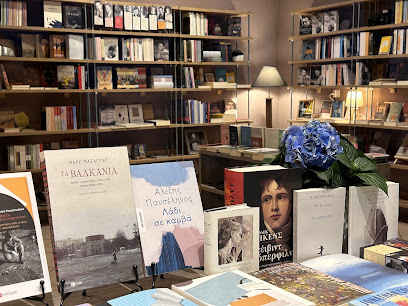
Υπατία Τουριστικά Είδη
Explore the charm of Monemvasia at Υπατία Τουριστικά Είδη, where unique fashion and authentic Greek style come together.

Kastania Eleni - Handmade Souvenirs Shop
Explore the heart of Greek craftsmanship at Kastania Eleni, where every handmade souvenir tells a story of tradition and artistry.

Essential bars & hidden hideouts
Enetiko Cafe & Cocktail Bar
Discover Enetiko Cafe & Cocktail Bar in Monemvasia – where local flavor meets stunning views and delightful drinks.

Matoula Restaurant
Experience the essence of Greek culinary traditions at Matoula Restaurant in Monemvasia, where every dish tells a delicious story.

Oinomelo
Experience the authentic flavors of Greece at Oinomelo, a top-rated restaurant in Monemvasia, offering a unique dining experience with stunning views.

Emvasis Cafe - Cocktail Bar/Εμβασις
Discover the charm of Emvasis Cafe in Monemvasia, where exquisite cocktails meet stunning views in a historic setting.

Athivoli
Discover the authentic flavors of Greece at Athivoli, a celebrated restaurant in Monemvasia, where culinary tradition meets stunning views.

Restaurant Skorpios
Experience the authentic flavors of Greece at Restaurant Skorpios in Gefira, a must-visit for food lovers.

Malvasia Café
Discover the perfect blend of history and flavor at Malvasia Café, where every sip of coffee tells a story in the heart of Monemvasia.

mateo`s
Savor fresh seafood and local beers at Mateo's, a top dining destination in Gefira, Greece, offering an authentic taste of the sea.

Voltes
Discover the vibrant flavors of Greek cuisine at Voltes, a must-visit restaurant in picturesque Monemvasia, perfect for an unforgettable dining experience.

Kanoni
Experience the enchanting culinary journey at Kanoni in Monemvasia, where Greek, Italian, and Mediterranean flavors come together in a delightful setting.

Vathysfairo Bar
Experience the charm of Vathysfairo Bar in Monemvasia, where modern relaxation meets historical ambiance, ideal for a memorable evening.

Chrisovoulo Cafe Restaurant Bar
Discover the flavors of Greece at Chrisovoulo Cafe Restaurant Bar, nestled in the historic Monemvasia Castle with stunning views and exquisite cuisine.

Marianthi
Experience authentic Greek cuisine at Marianthi in Monemvasia, where stunning views meet traditional flavors, creating an unforgettable dining experience.

Taverna Asterias
Discover Taverna Asterias, a seaside restaurant in Gefira, offering a taste of authentic Greek cuisine with breathtaking views and warm hospitality.

Di Porto
Experience the vibrant nightlife of Gefira at Di Porto, a cocktail bar offering unique drinks and a lively atmosphere perfect for relaxation.

Local Phrases about Monemvasia
-
- HelloΓεια σας
[Yia sas] - GoodbyeΑντίο
[Adio] - YesΝαι
[Ne] - NoΌχι
[Ohi] - Please/You're welcomeΠαρακαλώ
[Parakalo] - Thank youΕυχαριστώ
[Efharisto] - Excuse me/SorryΣυγγνώμη
[Signomi] - How are you?Πώς είστε;
[Pos iste?] - Fine. And you?Καλά. Εσείς;
[Kala. Esis?] - Do you speak English?Μιλάτε Αγγλικά;
[Milate Agglika?] - I don't understandΔεν καταλαβαίνω
[Den katalaveno]
- HelloΓεια σας
-
- I'd like to see the menu, pleaseΘα ήθελα να δω το μενού, παρακαλώ
[Tha ithela na do to menou, parakalo] - I don't eat meatΔεν τρώω κρέας
[Den troo kreas] - Cheers!Υγεία!
[Ygeia!] - I would like to pay, pleaseΘα ήθελα να πληρώσω, παρακαλώ
[Tha ithela na plirosso, parakalo]
- I'd like to see the menu, pleaseΘα ήθελα να δω το μενού, παρακαλώ
-
- Help!Βοήθεια!
[Voithia!] - Go away!Φύγε!
[Fiye!] - Call the Police!Καλέστε την αστυνομία!
[Kaleste tin astynomia!] - Call a doctor!Καλέστε ένα γιατρό!
[Kaleste ena giatro!] - I'm lostΈχω χαθεί
[Eho hafi] - I'm illΕίμαι άρρωστος
[Eimai arrostos]
- Help!Βοήθεια!
-
- I'd like to buy...Θα ήθελα να αγοράσω...
[Tha ithela na agoraso...] - I'm just lookingΑπλά κοιτάζω
[Apla kitazo] - How much is it?Πόσο κοστίζει;
[Poso kostizi?] - That's too expensiveΑυτό είναι πολύ ακριβό
[Afto ine poli akribo] - Can you lower the price?Μπορείτε να μειώσετε την τιμή;
[Borite na meiosete tin timi?]
- I'd like to buy...Θα ήθελα να αγοράσω...
-
- What time is it?Τι ώρα είναι;
[Ti ora ine?] - It's one o'clockΕίναι μία ώρα
[Ine mia ora] - Half past (10)Μισή (10)
[Misi (deka)] - MorningΠρωί
[Proi] - AfternoonΑπόγευμα
[Apoyevma] - EveningΒράδυ
[Vradi] - YesterdayΧθες
[Hthes] - TodayΣήμερα
[Simera] - TomorrowΑύριο
[Avrio] - 1Ένα
[Ena] - 2Δύο
[Dio] - 3Τρία
[Tria] - 4Τέσσερα
[Tessera] - 5Πέντε
[Pente] - 6Έξι
[Exi] - 7Εφτά
[Efta] - 8Οχτώ
[Ochto] - 9Εννιά
[Ennia] - 10Δέκα
[Deka]
- What time is it?Τι ώρα είναι;
-
- Where's a/the...?Πού είναι ένα/το...;
[Pou ine ena/to...?] - What's the address?Ποια είναι η διεύθυνση;
[Pia ine i diefthinsi?] - Can you show me (on the map)?Μπορείτε να μου δείξετε (στο χάρτη);
[Borite na mou dixete (sto charti)?] - When's the next (bus)?Πότε είναι το επόμενο (λεωφορείο);
[Pote ine to epomeno (leoforeio)?] - A ticket (to ....)Ένα εισιτήριο (για ....)
[Ena isitirio (ya ....)]
- Where's a/the...?Πού είναι ένα/το...;
History of Monemvasia
-
Monemvasia, derived from the Greek words 'mone' and 'emvasia' meaning 'single entrance,' was founded in 583 AD by inhabitants of the mainland seeking refuge from Slavic and Avaric invasions. The natural rock formation provided a defensible position, and the town quickly developed into a bustling trade and military hub.
-
During the Byzantine period, Monemvasia flourished as a significant maritime and commercial center. It became known for its production of Malvasia wine, which was exported throughout the Mediterranean. The town's strategic location made it a crucial naval base, contributing to the Byzantine Empire's control over the Aegean Sea.
-
In the early 13th century, following the Fourth Crusade, Monemvasia came under the control of the Venetians and later the Franks. The Venetians fortified the rock with impressive defensive structures, some of which remain to this day. It was during this time that the town's layout and architecture began to take on a unique blend of Byzantine, Venetian, and Frankish influences.
-
Monemvasia fell to the Ottomans in 1540 and remained under Ottoman rule for several centuries. Despite the change in rulers, the town retained its commercial importance, although it faced occasional declines due to shifting political and economic landscapes. The Ottomans left their mark with architectural additions, such as mosques and baths, some of which can still be seen.
-
Monemvasia played a significant role in the Greek War of Independence against Ottoman rule. In 1821, Greek revolutionaries captured the town, marking a pivotal moment in the struggle for Greek independence. The liberation of Monemvasia boosted morale and served as a strategic victory for the revolutionaries.
-
In the 20th century, Monemvasia experienced a period of decline as its population dwindled and many residents left for urban centers. However, in recent decades, the town has seen a revival, largely due to its appeal as a tourist destination. The restoration of historical buildings and the promotion of its rich cultural heritage have brought new life to this ancient town.
-
Monemvasia is renowned for its well-preserved medieval architecture. The town is divided into the Upper Town, where the fortress and the Church of Agia Sophia are located, and the Lower Town, which contains numerous Byzantine churches, mansions, and narrow, cobbled streets. This blend of historical structures offers a unique glimpse into the town's diverse past.
-
Today, Monemvasia is not only a historical treasure but also a cultural gem. The town hosts various festivals and events that celebrate its rich heritage, from music and arts festivals to traditional Greek celebrations. The preservation of local traditions and the promotion of Monemvasia's unique history continue to attract visitors from around the world.
Monemvasia Essentials
-
Monemvasia is located on the southeastern coast of the Peloponnese in Greece. The nearest major airport is Kalamata International Airport, approximately 190 kilometers away. From Kalamata, you can rent a car or take a bus to Monemvasia, which typically takes around 3 hours. Alternatively, you can fly into Athens International Airport and drive or take a bus to Monemvasia, a journey of approximately 4 to 5 hours.
-
Monemvasia is a walkable town, especially within the medieval fortress area. For exploring the surrounding regions, renting a car is a convenient option. Local buses connect Monemvasia to nearby towns and cities, and taxis are available for short trips. Keep in mind that the streets inside the fortress are narrow and cobbled, so comfortable walking shoes are recommended.
-
The official currency in Greece is the Euro (EUR). Credit and debit cards are widely accepted in hotels, restaurants, and shops in Monemvasia. However, it is advisable to carry some cash, particularly for small purchases and in establishments that may not accept cards. ATMs are available in the town, but it is wise to ensure you have enough cash before entering the fortress area.
-
Monemvasia is generally a safe destination for tourists. However, it is always advisable to take standard precautions such as not leaving valuables unattended and being aware of your surroundings. There are no specific high-crime areas targeting tourists, but it is best to avoid isolated areas after dark. The narrow, cobbled streets can be slippery, so tread carefully, especially in wet weather.
-
In case of emergency, dial 112 for immediate assistance, which is the pan-European emergency number. Monemvasia has a local medical center for minor health issues and emergencies. For more serious medical needs, the nearest hospital is in the town of Molaoi, approximately 30 kilometers away. It is advisable to have travel insurance that covers medical emergencies.
-
Fashion: Do dress modestly, particularly when visiting religious sites. Avoid overly revealing clothing. Religion: Do respect local customs and traditions. Always cover your shoulders and knees when entering churches. Public Transport: Do be respectful and offer your seat to elderly passengers. Don't eat or drink on public transport. Greetings: Do greet people with a friendly 'Kalimera' (Good morning) or 'Kalispera' (Good evening). Eating & Drinking: Do try local delicacies and accept food offerings graciously. Don't refuse hospitality, as it is considered impolite.
-
To experience Monemvasia like a local, take a stroll through the narrow streets of the medieval fortress and explore the small shops and cafes. Visit the Church of Agia Sofia for stunning views of the Aegean Sea. Try local specialties such as 'amygdalota' (almond cookies) and 'saitia' (a type of pie). Engage with the locals, who are often eager to share stories about the town's history and culture. Don't miss the chance to take a swim at the nearby Pori Beach, a favorite spot among residents.
Trending Landmarks in Monemvasia
-
Oinomelo
-
Emvasis Cafe - Cocktail Bar/Εμβασις
-
Monemvasia Bridge
-
Acropolis of Monemvasia
-
CHRISOLITHOS
-
Malvasia Traditional Hotel
-
Hagia Sophia Holy Orthodox Church
-
Lighthouse of Monemvasia
-
Paralia Monemvasias
-
Kellia Guesthouse
-
Monemvassia Island
-
Ardamis Traditional Guesthouse
-
Elkomenos Christos
-
Cannon
-
Moni Emvasis Luxury Suites










